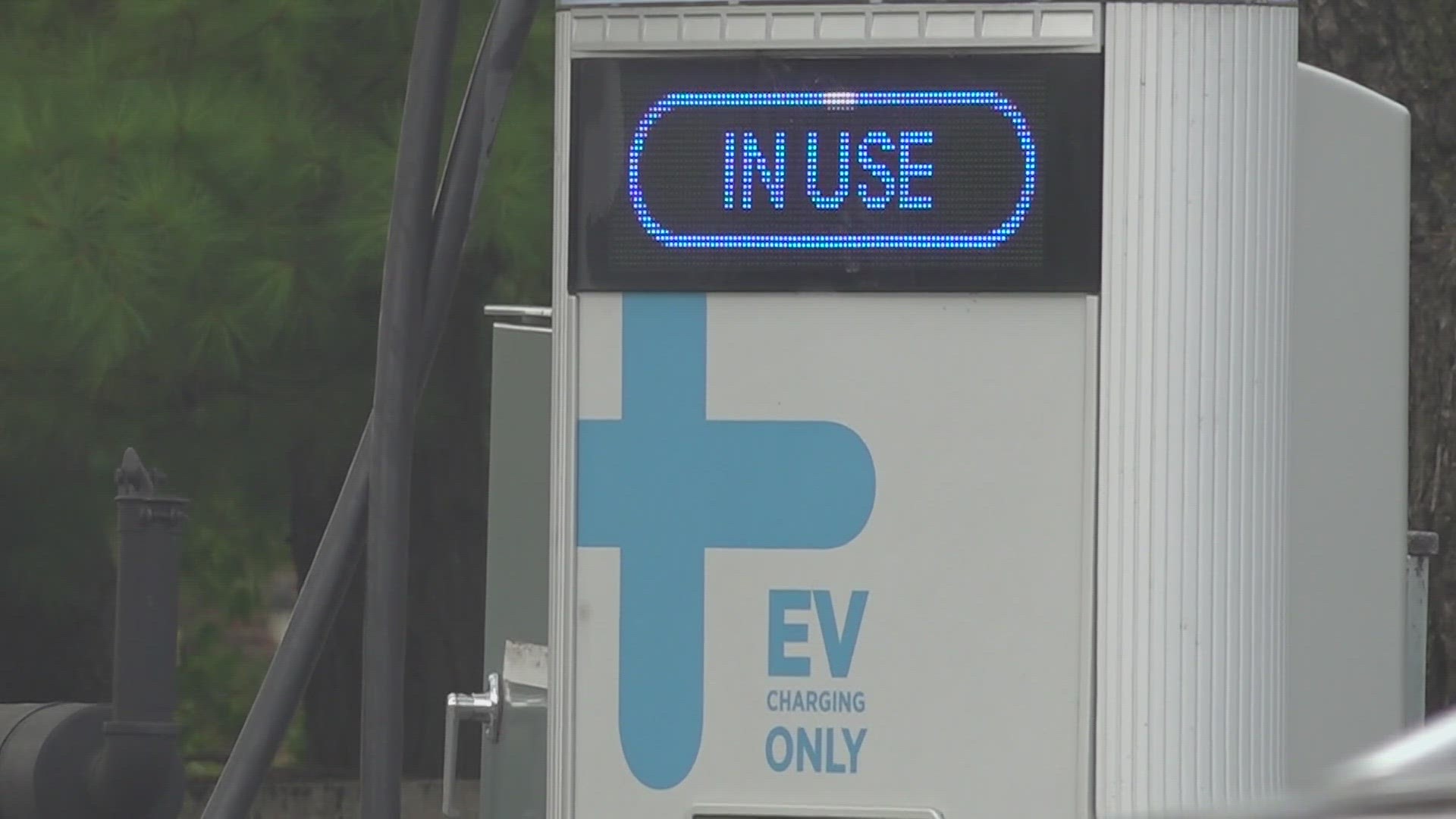COLUMBUS, Ohio — If a new standard by the Environmental Protection Agency is set, Ohio will see a surge in electric vehicle drivers over the next 10 years.
In April, the EPA announced its most ambitious proposal to cut down on pollution from vehicles. It would impose regulatory penalties on companies that don't move fast enough to EVs. If the rule is finalized, that could mean up to 67% of new vehicles sold by 2032 would need to be electric.
On Wednesday, Representative Allison Russo and Senator Bill DeMora, both Democrats, held a news conference to support that EPA standard, urging the agency to move quickly to finalize it.
"This isn't just about us it's about our families, our neighborhoods, and our collective wellbeing,” said Russo.
But with more drivers plugging in instead of fueling up, there's a bigger question looming: How is Ohio going to pay for the roads?
Right now, the state depends on the gas tax. And for EV owners who don't pay it, they instead pay a yearly $200 registration fee. Which to some seems like a punishment.
“There have been some real discussions about how sustainable you know our current structure of relying on the gas tax is,” Russo said. “There's a large study commission that's going to be looking at this in detail.”
But for some EV drivers, it's the price for peace of mind.
“I just didn't want to use any more fossil fuel,” Kevin Eigel said.
Eigel lives in Hilliard and drove his electric vehicle to Bexley for lunch. He parked outside Bexley City Hall, where there is a public charging station.
He’s hopeful there will be more charging stations like this one throughout the state. He also said he hopes to share the road with more EV drivers.
“I think anything the government can do to speed that along is great,” Eigel said.
10TV reached out to Honda and a spokesperson provided the following statement in an e-mail:
“At Honda, we remain focused on our goal to achieve carbon neutrality - zero emissions - for all products and corporate activities by 2050, including our vision to make battery-electric and fuel cell electric vehicles represent 100% of our vehicle sales by 2040. We have already announced plans to establish an EV Hub in Ohio where we will build EVs starting in 2025. At the same time, our electrification strategy includes growing sales of hybrid-electric vehicles, also produced in Ohio, which are helping reduce greenhouse gas emissions and enabling our customers to transition with us to the electrified future.”
Meanwhile, more than two dozen new EV charging stations are coming to Ohio and construction will start on those in November.
Gov. Mike DeWine announced the locations of 27 future stations earlier this summer. Some will be along I-70 and I-71. The state is getting $140 million over the next five years to fund those stations.
According to DriveOhio, they are expected to be up and running by the end of 2024.

